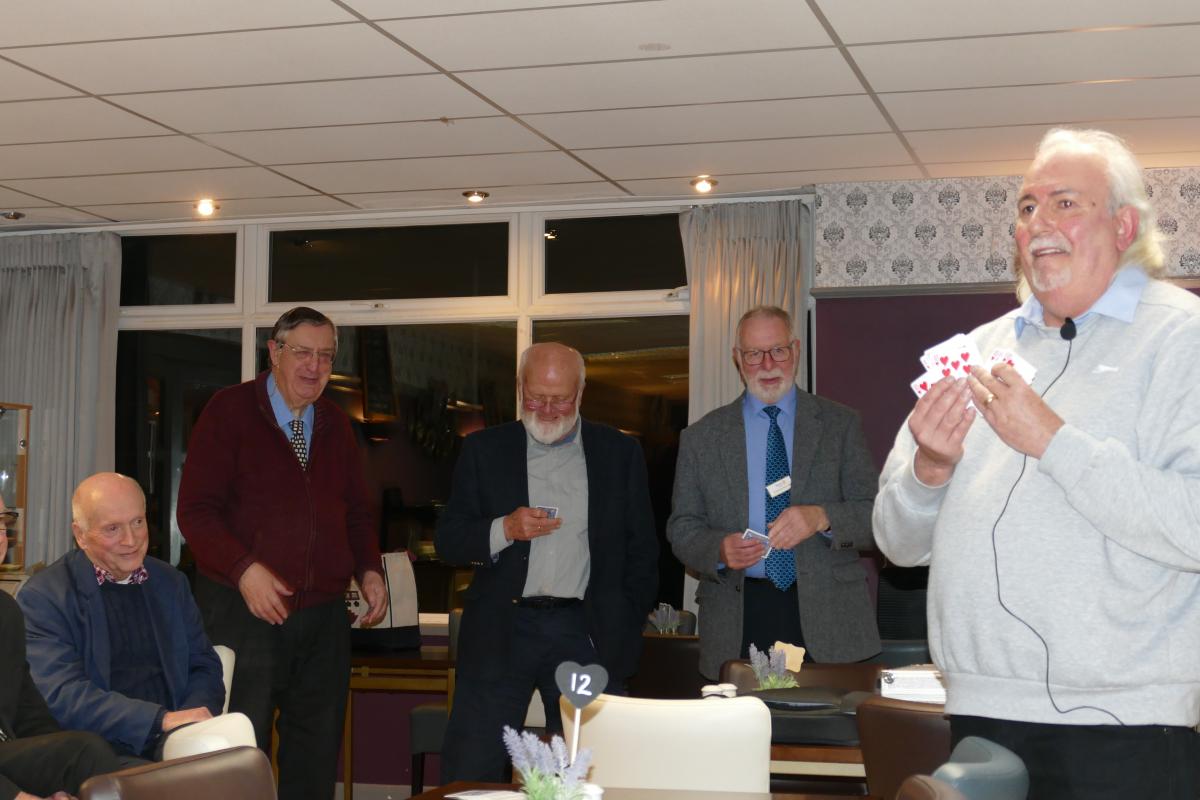Secrets of the Human Brain
Tue, Feb 21st 2023 at 5:45 pm - 7:45 pm
Bob Pullen

MORPETH ROTARY THE HUMAN BRAIN
Dr. Bob Pullen, lecturer and researcher who was at Sunderland University and Newcastle, spoke to Morpeth Rotary on the human brain. He mostly taught medical and pharmacy students and wrote a book called 'Secrets of the Human Brain'.
The human brain is the most sophisticated structure that exists. It is almost fully developed in the foetus at about three months and is largely made up of nerve cells. Unlike other cells in the body, they stop deviding and never devide again. The brain has its maximum number of cells at birth and then its downhill all the way. At one year the brain weighs around 1000 grams, the adult brain is between 1200 and 1400 grams. Each nerve cell, called a neuron, produces a tiny electrical voltage of around one tenth of a volt. It connects to one receiver in the brain and that connects to 5000 others, providing a remarkable and complex network. All neurons produce the same pulseand they are used to create signals and messages like Morse code.They can grow to build the equivalent of letters, words, sentences and paragraphs. Other neurons understand and interpret the codes to register senses like vision which is very complex. The brain has specialist areas with special functions. The region for touch lies across the top of the brain. If anyone is touched, there is a pulse that the brain relates to its map of the body. The hands, fingertips and lips are especially sensitive and use a lot of brainpower. Another strip across the top front of the brain controls movement of parts of the body. We are incredibly dextrous and move our hands and fingers better than any other living creature. It takes a lot of brainpower to speak and move. Other parts of the brain register taste, smell, hearing, vision,balance, language, memory, personality, emotions and speach. The section for vision is at the back of the head. Every part of the brain is used.
Language is one of the great achievements of the human brain. In fact we have two brains, a right and a left hemisphere with links like cables connecting them. The right side of the body is controlled by the left hemisphere and vice versa. 90% of us are right handed where the left side of the brain dominates hand movements, the right eye usually sees better and the right ear hears better. There are differences in the brain between men and women. For language and speach, both sides of the brain are used in women but only one side in men. Women are better at speach, communicating, negotiating, reading and vocabulary.
In vision, each eye has two cameras so there are four videos feeding into the brain. Some camera signals stay on the same side of the brain while others cross over. The image received in vision is upside down and the wrong way round and the brain has to allow for this. Images take a quarter second to register so we run a quarter second behind reality, but then, all humans do. There are 40 regions in the brain for sight that register such details as colour, movement and angle. Eyes vibrate at 3000 scans per second. They follow a particular route pattern to analyse the human face. There is a special part of the brain that identifies faces.
A brain can last for 150 years, it is usually something else that gets you before then. The brain deteriorates over time due to the natural process of aging. The first part to go is usually short term memory.Some health conditions can speed up the process. In cases of severe dementia people can cease to recognise themselves in a mirror.
The brain has an old part that deals with primitive issues like hunger and cold, and a new part that does the clever stuff like thinking and modifies the basic brain.
Bob finished with a light hearted experiment in telepathy that involved a pack of identical playing cards. He was thanked by Prof. Andrew Hamnett.
'What We Do' Main Pages: